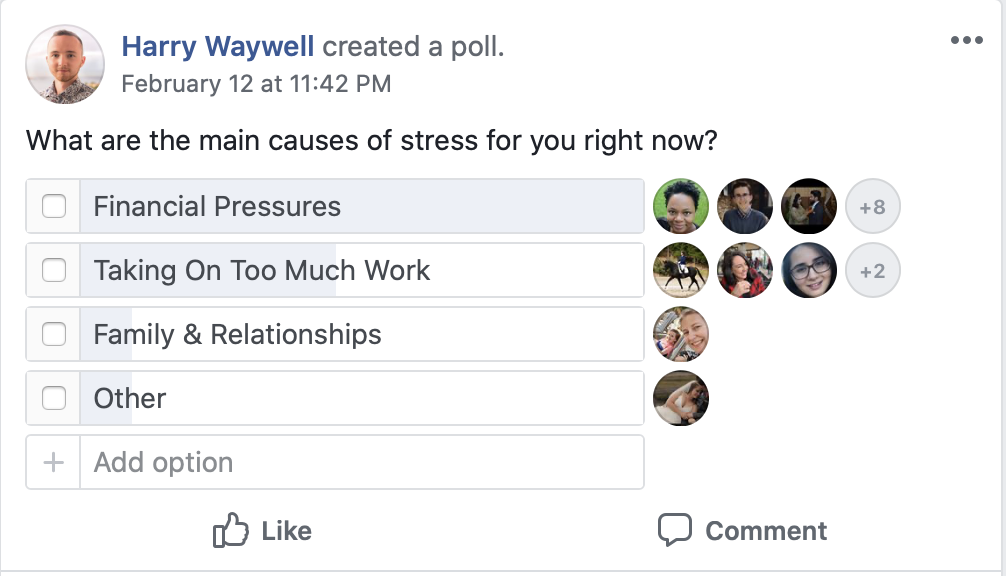The world of marketing is a numbers game. From the number of leads you take through a funnel to the number of sales you make, marketers ought to be paying attention to numbers if they want to make better campaigns every single time.
So this is where market research comes in.
By using data-driven strategies and campaigns, you’re able to optimize your lead generation and sales efforts and make the best decisions using cold-hard numbers and facts.
This data can inform the way you do your social media marketing, your PPC campaigns…practically every marketing move you make.
And while putting up market research activities is often difficult for small business owners who might not have the multi-million budget of large companies, you might just be able to gather that precious data another way – social media.
Can you use social media for your market research campaigns? In this blog post, we explain why this can be a great arm for your market research efforts as well as how you can get started.
Why on social media?
We should first take a look at why social media can be a great market research tool:
- Easier to get your target audience to participate. People who follow you on social media are more likely to want to engage with your brand. It can be far easier to persuade your existing audience versus a completely random sample who may be unwilling to participate.
- Access data results faster. Social media gives you data and insights after just a few hours, unlike traditional surveys and focus group discussions that can take days to weeks before you can make any conclusions.
- More cost-effective. Traditional market research efforts can be costly to execute, but social media analytics and post insights are right within reach.
Convinced you should be using social media to do some market research? Keep reading to the next section to see the steps to craft your own market research campaign using social media channels. Get started with this Social Media Marketing Plan: An 11-Step Template.
Here are the steps to create a social media campaign for market research:
Choose social media channels
The first thing you ought to do is choose relevant channels where your audience is. Refer back to your buyer persona to see where your audience hangs out.
Some obvious contenders will be places like Facebook as one of the social networks with the broadest audiences, but places like Instagram and Twitter attract many younger demographics.
A great channel to consider, enough though it probably didn’t come as top of mind, is LinkedIn. Whether you’re in B2B or B2C, you’ll find your audience among this social network.
You can join LinkedIn Groups to find your target audience. And you can easily search for industry experts whom you can interview for any insights about your market.
Use social listening
Sometimes you can learn a lot about your audience using social listening. You can set up a filter to monitor your brand mentions across social media channels, but don’t hesitate to do the same for your competitors as well as any specific industry keywords that might get you candid insights from your audience.

Jamie Sheldon from MyUKMailbox shares about how they effectively use social listening to get into the minds of their audiences, “We monitor what people are saying about our service and the service of our competitors.
We also tune into complaints or ‘wishes’ our audience has about our industry to see how we can use that to improve our service.”
Determine your post types and KPIs
It’s no secret that different post types perform differently on different social media channels. Some channels even have unique features and functionality that make it easy to engage with your audience in more meaningful ways.
Facebook and Twitter, for example, have polling features. Instagram has the same feature on Stories and has the Questions sticker. LinkedIn, for its part, has a unique set of reactions per post, and users are more likely to comment on posts to share their ideas and opinions.

While the unique features are great for engagement and as market research tools, you can still use regular posts, like images and videos, that ask compelling questions or have clear CTAs.
When you’ve determined the types of posts you want to create, set some KPIs, such as a conversion goal like number of responses, reactions, etc.
Each social media platform has built-in analytics and insights to measure your post’s performance, so pay attention to those benchmarks after the first few hours of posting.
Craft compelling copy and CTAs
Depending on your post types, you’ll need to make sure your copy is clear, concise, and compelling. After all, you want your audience to engage with your post in the way you intended. This makes effective and strategic copywriting a must.
For example, if you were running a small contest that aimed to find out your audiences’ thought about your next product launch, you’ll need to clearly specify that you’re running a contest, how to take part, as well as what the winner receives.
If you contest, survey, or any other post links out to a dedicated landing page, you can write a shorter copy with a link as the CTA to take part.

Invest in the right tools
To get the most out of your social media market research, you’ll need to have the right tools. You can supplement the built-in analytics features with third-party market research tools that cost a fraction of how much you might spend to organize in-person surveys or focus groups.
You can also benefit from investing in social media tools themselves. Software that helps you create beautiful graphics, double-check your copywriting, and even create better survey or contest experiences can all do well to boost the effectiveness of your market research efforts.
Provide an irresistible incentive
The easiest way to get engagement from your audience for your market research is to make sure the action required doesn’t take much effort. This can be one-click poll votes or choosing a reaction.
When you’re planning to send out a lengthier post, such as a multi-question survey, you’d do best to provide an amazing incentive to encourage participation.
You can provide a gift card, a free trial, or anything else you know your audience will want in exchange for their time and effort. Needless to say, the more effort they’ll need to put into your market research activity, the bigger the incentive should be.

Use conclusions to inform your next steps
Perhaps the most important step after doing your market research is drawing actionable conclusions from your data to create strategic campaigns, new products, or added service.
Don’t stop at simply getting those reactions, responses, and comments – you need to turn these insights into strategy.
No matter how big or small your market research efforts are, you can still find some important trends and patterns you might not have seen before. Whether it’s to improve your product or to connect with your audience better, data from your social media market research can pack a powerful punch for your brand.
Here’s an example of how Starbucks quite literally used social media to help them create new menu items. They started a Twitter account called My Starbucks Idea that encouraged customers to share and vote on new ideas the huge chain can introduce to stores.

Key Takeaways
If your brand is unable to conduct traditional market research efforts because of lack of resources, social media can fill in the gap almost as well.
Be sure to follow the steps in this post to make sure you’re creating a clear, actionable campaign that helps you find out audiences’ thoughts, opinions, needs, and more. Soon, you can continue to grow your business and brand even on a budget.
About the Author

Kevin Payne is the Founder of Kevintpayne.com, an inbound marketing agency and HubSpot Partner that helps tech startup founders implement inbound marketing campaign sprints to increase their qualified leads.

